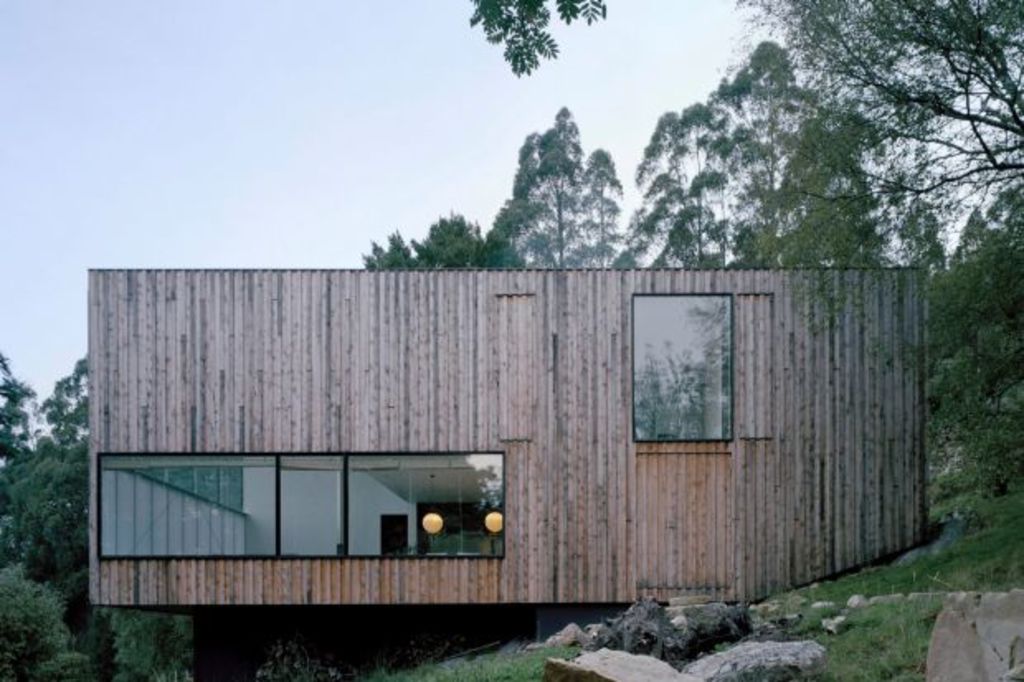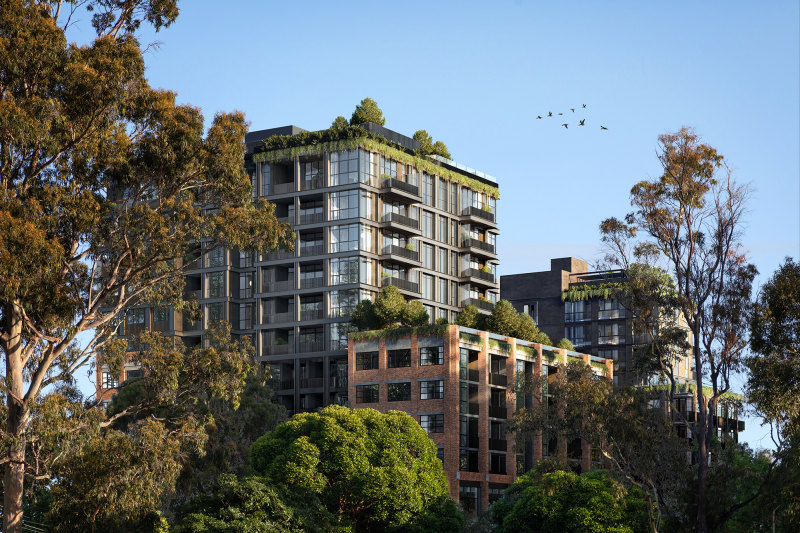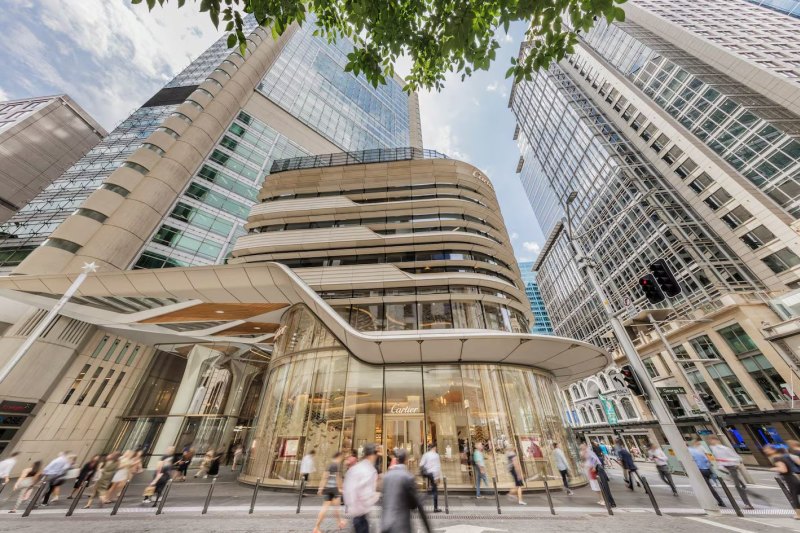D'Entrecasteaux House: Tour de force architecture in Tasmania

The house Thomas Bailey and Megan Baynes designed for their family on Mount Wellington to overlook Hobart and the Derwent Estuary is so fresh and simple that some presume it was, as Bailey tells it, “finished last week”.
It’s 10 years old. Yet the timber-battened building is so apt in its use of a local tree species, celery-top pine; in how it snugs into the slope of a sometimes snowed-in setting, and in the way “it creates relationships with the landscape so that it has the nature of graceful ageing in place”, says Bailey, recipient of Tasmania’s 2017 Emerging Architects’ Prize.
The contrastingly robust and hunkered-down three-bedroom house on Bruny Island designed by Bailey and Baynes, his life and practice partner in Room 11 Architects, was finished last year.
The clients included a geologist whose first specific instruction to the pair was, “don’t use stone”.
“I’m accommodating,” Bailey confesses. “But I have my opinions. And all our work since we began Room 11 has been strong.” All of the practice’s work, too, tends to exemplify a preoccupation with permanence. “I think about it a lot.”
So D’Entrecasteaux House – which, considering its monumentality and setting, unsurprisingly won last year’s Tasmanian Australian Institute of Architects’ chapter award for new residential – ended up with massive rock walls.
In an open paddock and close to the water on rugged Bruny Island – the landform noted by Abel Tasman in 1642 and named by French explorer Antoine Bruni D’Entrecasteaux in 1792 – the house is often blasted by Southern Ocean gales. “So I felt it necessary for the building to be very solid,” Bailey says.
- Related: A hidden inner-city garden oasis
- Related: The feature modern buyers care about most
- Related: The forgotten 1970s trend making a comeback
The western wall is interrupted by only one window that reflects the D’Entrecasteaux Channel as a crepuscular installation.
Solid, permanent, born of its place. The walls that bracket what Bailey calls “a concave floor plan” – or in architecture-speak, “an inflected non-orthogonal plan” – to shield the dark-stained Tasmanian oak interiors and the wide, triangular deck are “huge: 60 centimetres’ thick and made of Tasmanian dolerite, an extremely dense stone, 180 million years in the making”.
To secure the preferred stonemason for the job, the architect and client – “who came around” to the idea of a house of stone – had to wait for three years for Peter Guiver, of Mountain Trails, to become available.
The raw substance was more readily to hand. “The quarry is on the same geological outcrop as the building occupies,” Bailey says.
And it is this pragmatic sensibility to the spirit of place – “of Tasmania’s more robust geomorphic and environmental conditions” – that brought the architect couple back to their island home from a possible future working in Europe.
“Seeking to resonate with place” is a key to their work that makes it outstanding, even in the pretty remarkable academy that is modern Tasmanian architecture.
Bailey acknowledges that “the history of artists and architecture working with that relationship to the land is what makes Tasmania quite different to the [mainland] Australian school”. Speaking generally and also for his work, he adds, “there is a difference in our approach”.
Mind you, with a small population and a wealth of available and affordable sites with such amazingly scenic offerings, and with an influx of mainland money with sophisticated appreciation of those attributes and therefore some very nice budgets, thank you, Tasmania’s contemporary architecture does have some competitive advantages.
As with D’Entrecasteaux House, the island is producing some sensational residential, hospitality, commercial and tourism buildings. Even incidental infrastructure is often of brave invention.
For art museum MONA, for instance, Bailey is working on some underwater architecture designed to bring to public attention the health status of the Derwent.
But as the basic form of the Bruny Island house displays, and in its more contained way the Little Big House up on Mount Wellington (“which was as simple as possible to construct, but complex and rich to experience”), the structures are “distilled” or pared right down to its purpose, which is to make restful shelter that maintains focus on the external world.
The limited glazing in Little Big House creates sequential visual interactions with the landforms and “the beautiful, ever-changing sky”. Pushed to one edge of its building envelope , the “cosy” house also creates an implied courtyard.
The dark wood interiors of the “psychologically comfortable” stone house in the open field on Bruny are a way of mitigating what Bailey sees as “Tasmania’s sometimes very bright daylight” and to continually select viewpoints towards the scenery.
“As the owners move around the house during the day they are always moving through different places in the landscape.”
The darkness of the house, which appears to have black windows but doesn’t – “it is double-glazed clear glass that appears dark because of the interiors” – is about making it quiet and melded with its situation.
“Our idea for years has been to make buildings that become akin to a mute, friendly presence in your life.”
The ultimate destination
A recessive effect is not what happened with a multi-faceted Room 11 project that took shape on the opposite bank of the Derwent River to the Museum of Old and New Art (MONA).
GASP, or the Glenorchy Art and Sculpture Park, below, is another outing that won the practice another two awards. In 2013 and 2014, Stages one and two gained the national AIA awards for urban design.
In the big picture, GASP is a nine-hectare, shore-hugging linear adventure, art, performance space and wetland park with walking tracks.
The infrastructure Room 11 gave it includes a spectacular elongated pavilion with an inset of red glass through which more of the Derwent and the estuarine landforms are transformed into a huge, kinetic picture; a 12-metre cantilever that projects over the water, and a bridge-like boardwalk with balustrades in 44 colours.
“The ultimate destination in a public park, you can see the pavilion from kilometres away,” Thomas Bailey of Room 11 says.
We recommend
We thought you might like
States
Capital Cities
Capital Cities - Rentals
Popular Areas
Allhomes
More







